Mexican skulls have a long history in the culture of this country. In pre-Hypanic times, human skulls were often made from clay and used in ceremonies and rituals to honor the dead. During the colonial period, these traditions merged with Catholic beliefs and practices, giving rise to the celebration of the Day of the Dead, as we know it today.
There are different artisanal production techniques, the best known being paper mache, clay and ceramic. There are also sugar skulls that are prepared from a mixture of sugar, water and lemon and are used on the Day of the Dead.
Mexican skulls and the Day of the Dead
Mexican skulls are a fundamental element in the celebration of the Day of the Dead in Mexico. On this holiday, it is believed that the dead return to the world of the living to share a moment with their loved ones. They are used as offerings to honor and remember those who have died, and are placed on altars along with candles, flowers, food, and other objects that the deceased enjoyed while alive.
They are an example of how an ancestral tradition has managed to remain current in Mexican culture and be recognized throughout the world. Its cultural significance is such that in 2008 UNESCO declared the Day of the Dead as Intangible Cultural Heritage of Humanity, thus recognizing its importance and meaning for Mexican culture and for the world in general. Skulls are considered a cultural icon that represents the Day of the Dead holiday and has become a symbol of Mexican culture.
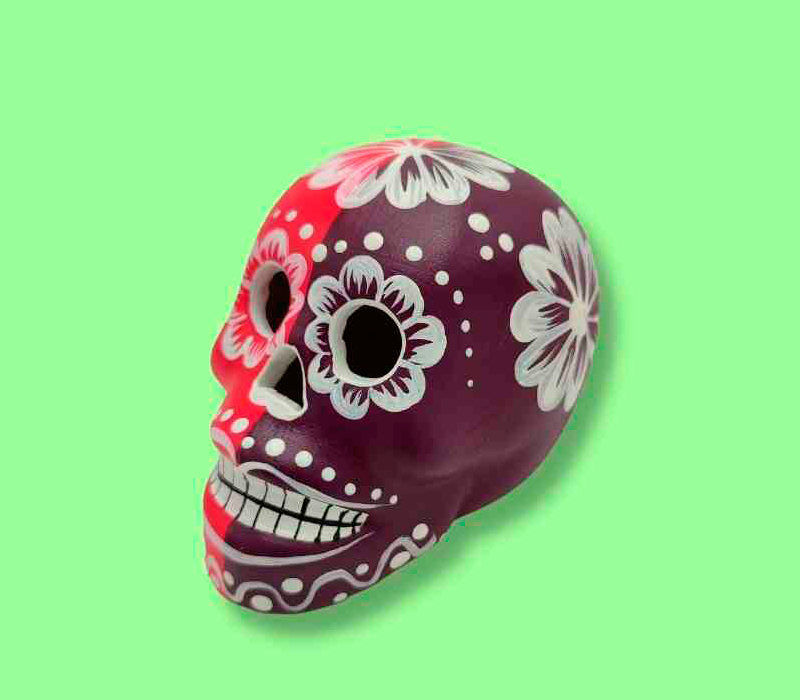
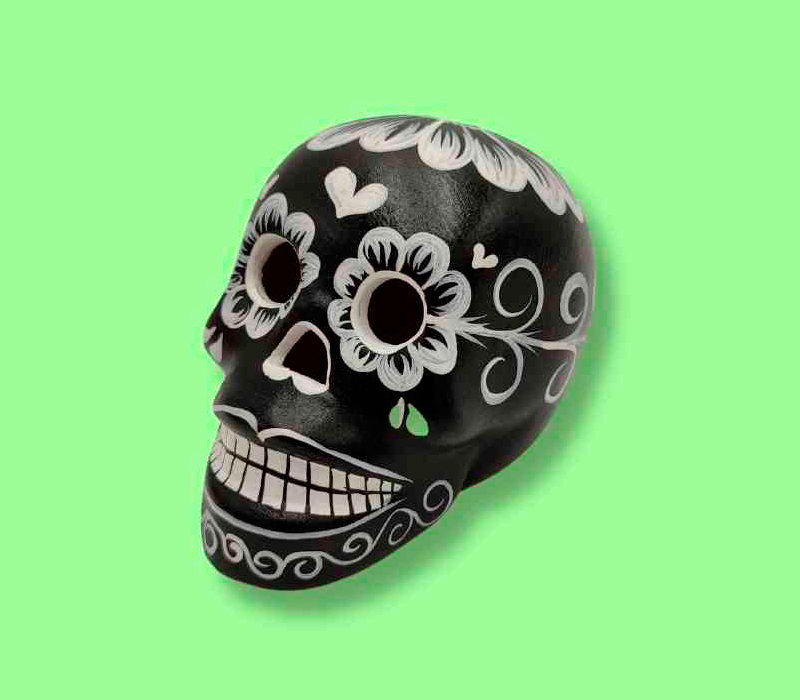
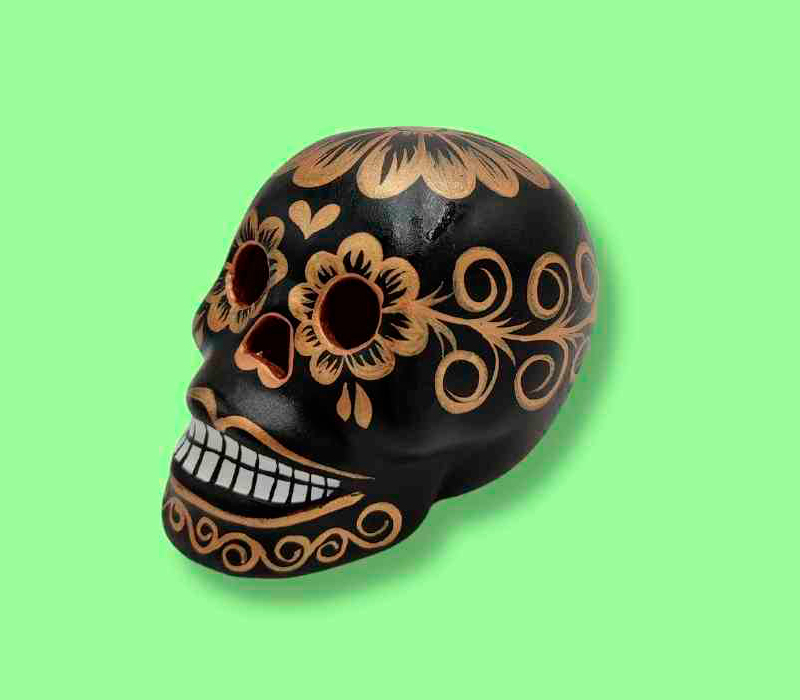

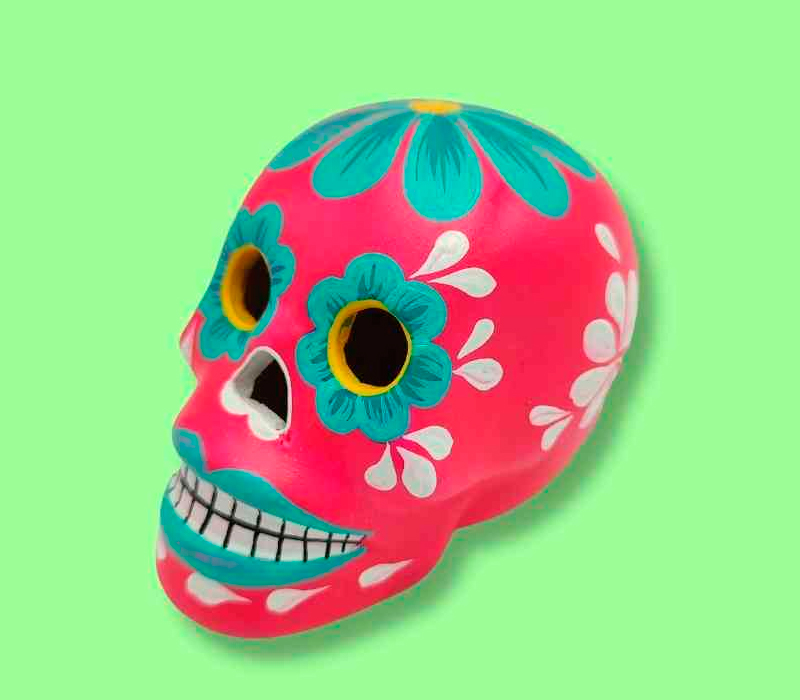
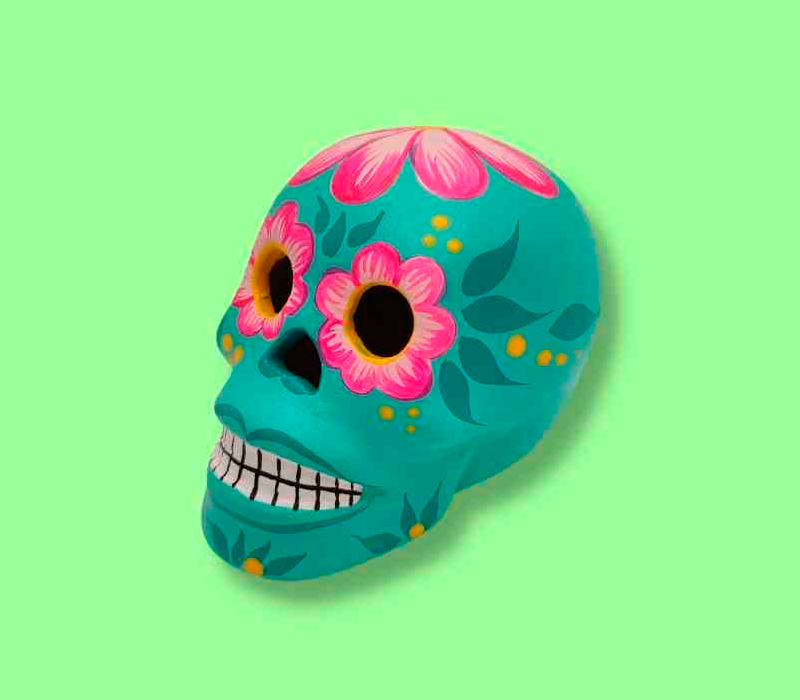
His influence on popular art
In Mexican culture, skulls are also a recurring theme in popular art, especially in painting, printmaking, sculptures, and murals. Mexican artists have created numerous works inspired by skulls, to the point of becoming their own artistic genre. They are usually represented in a figurative way, in a relatively realistic way, however there are also more abstract and imaginative works, which reinterpret the symbolism and aesthetics of skulls in new and creative ways.
Mexican skulls have also been used as inspiration in fashion and design. Nowadays, it is common to find clothing, accessories and decorative items with skull motifs, both in Mexico and in other countries around the world.
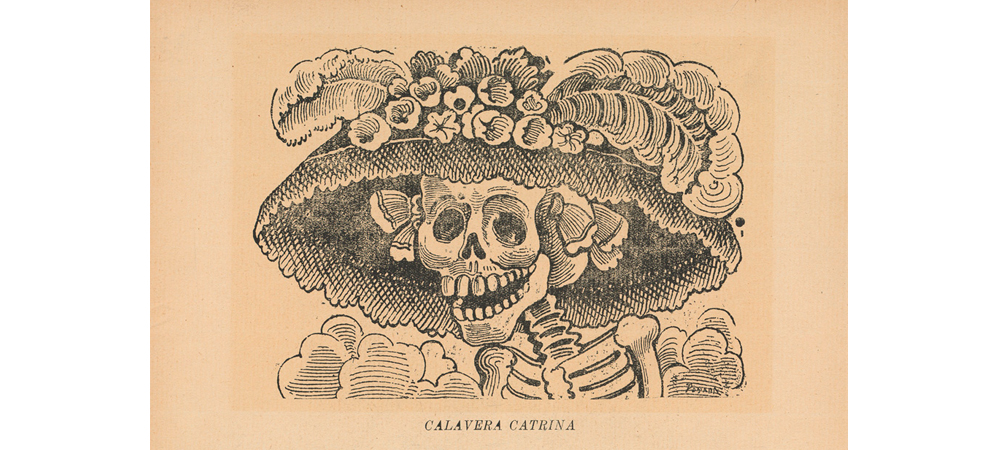
Catrina the most famous skull
The best-known skull not only in Mexico but internationally is, without a doubt, the Catrina. It was created by José Guadalupe Posada to illustrate satirical publications of the time, it was a criticism of the Mexican aristocracy that denied its roots. It was originally called “La Calavera Garbancera”, it was Diego Rivera who gave it the name Calavera Catrina and represented it for the first time with its characteristic clothing since in the original engraving by Guadalupe Posada she had no clothes, she only had a hat representative of the Mexican upper class. Rivera immortalized Catrina in his mural 'Dream of a Sunday Afternoon in Alameda Central'.
Currently, the Calavera Catrina has been associated with both death and the Day of the Dead celebrations. It has undergone variations and numerous reinterpretations but continues to be faithful to its essence, both in its representation and in its clothing.
Mexican skulls are one of the types of pieces that you can find in our Mexican crafts store in Madrid. You can see some of the ones we currently have at our online store or you can also come visit us at our physical store, we are on López de Vega Street, 3. We will love to serve you and share with you our passion for Mexican crafts. If we don't have what you are looking for, tell us and we will try to find it for you. We will wait for you.